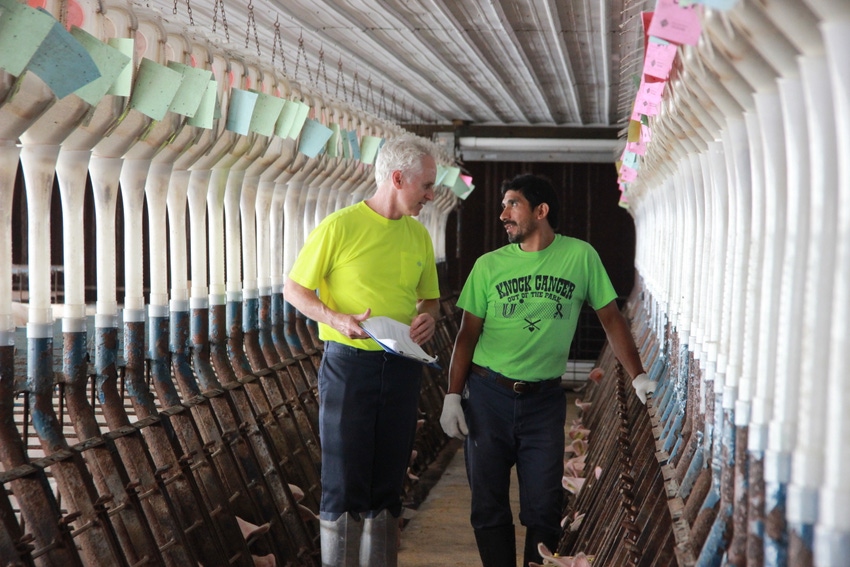ISU video helping producers respond to foreign animal disease
Demonstration video part of ongoing effort to help producers prepare for outbreak.
December 2, 2020

The Iowa Department of Agriculture and Land Stewardship (IDALS), in conjunction with Iowa State University, has developed a video showing livestock producers how to set up a vehicle cleaning and disinfection corridor to protect their farms, and neighboring farms, during a foreign animal disease outbreak. This is one of many steps the department is taking to help livestock producers prepare for a potential foreign animal disease outbreak.
Biosecurity is one of the most effective ways to prevent the spread of a foreign animal disease, and a vehicle cleaning and disinfection corridor is a critical component of an on-farm biosecurity plan. All vehicles, trucks, trailers and equipment entering or exiting a farm during a foreign animal disease outbreak should be properly cleaned and disinfected to help prevent pathogens from spreading to other locations and livestock.
“Practicing proper biosecurity on livestock farms every day is the best way to protect animal health, and biosecurity becomes even more important during a foreign animal disease outbreak,” said Iowa agriculture secretary Mike Naig. “This video is one of many resources the department has created to help livestock producers plan and prepare for a foreign animal disease outbreak so they can respond more effectively, if an outbreak occurs.”
The video “Setting Up and Operating a Cleaning and Disinfection Station” is a free resource for livestock producers. It is available on the Iowa Department of Agriculture and Land Stewardship’s biosecurity web page.
The video explains:
How to select the location and prepare a decontamination corridor
What items are needed to operate a cleaning and disinfection station
What to do when a vehicle arrives at the farm
How vehicles should enter the decontamination corridor
How vehicles should leave a farm directly impacted by a foreign animal disease
How to disinfect the decontamination corridor
How to protect personnel
How to properly remove personal protective equipment (PPE)
How to plan for inclement weather
IDALS produced the video using the Foreign Animal Disease Preparedness and Response Fund (163.3B), provided by the Iowa Legislature to protect the state’s food animal production and economy.
Foreign animal disease prevention, preparation
Efforts are underway by the U.S. Customs and Border Protection and the U.S. Department of Agriculture (USDA) to prevent a foreign animal disease from breaching the border. If it does, the IDALS has been working closely with the USDA, farmer-led livestock groups, and other livestock-producing states to develop plans and resources to contain and eradicate it as quickly as possible.
In September 2019, the IDALS and 14 other swine-producing states participated in a four-day African swine fever workshop led by USDA Animal and Plant Health Inspection Service (APHIS) to test current foreign animal disease response plans. Each day of the exercise focused on different tactics deployed during an outbreak — detection, containment, eradication and cleaning and disinfection. This allowed the USDA, the IDALS, state agencies, industry representatives and producers to put response plans into action to make sure they could be executed quickly and effectively.
In May 2020, IDALS launched a foreign animal disease program for veterinarians licensed to practice in Iowa. The IowaFADefense program teaches veterinarians how to rapidly detect, respond to and contain foreign animal diseases affecting livestock and poultry. The program also increases the number of veterinarians who are trained and able to assist the IDALS and USDA in responding to a foreign animal disease outbreak.
You May Also Like



